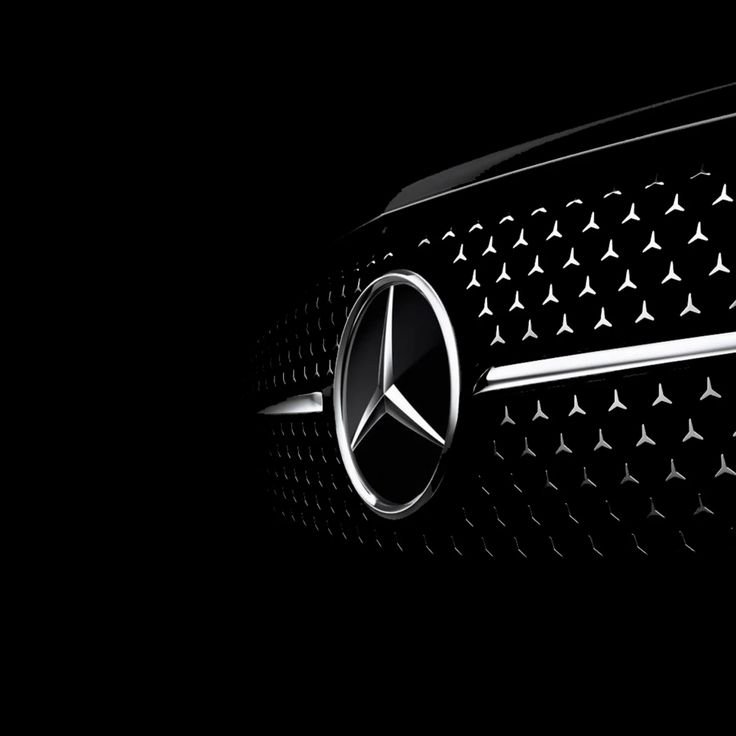
The Internet of Things (IoT) has revolutionized various industries by connecting devices and enabling them to communicate with each other. One of the most significant impacts of IoT is seen in the automotive industry. Modern vehicles are now equipped with IoT technologies that enhance safety, improve efficiency, and provide a better driving experience. This article explores the integration of IoT in modern vehicles, discussing its benefits, applications, challenges, and future prospects.
Understanding IoT in Automotive Industry
The Internet of Things (IoT) refers to the network of physical objects embedded with sensors, software, and other technologies to connect and exchange data with other devices and systems over the internet. In the automotive industry, IoT enables vehicles to communicate with each other, infrastructure, and cloud services, leading to smarter and safer transportation.
Components of IoT in Vehicles
Sensors and Actuators: These devices collect data from the vehicle’s environment and internal systems. Common sensors include GPS, accelerometers, cameras, and temperature sensors.
Connectivity Modules: These modules, such as 4G/5G, Wi-Fi, and Bluetooth, enable vehicles to connect to the internet and other devices.
Data Processing Units: These units process the collected data to provide real-time insights and actions.
Cloud Platforms: Cloud services store, analyze, and manage the data, providing scalable and flexible solutions.
Benefits of IoT in Modern Vehicles
Enhanced Safety
IoT technologies significantly improve vehicle safety by providing real-time information and automated responses.
Advanced Driver Assistance Systems (ADAS): IoT enables features like lane departure warnings, adaptive cruise control, automatic emergency braking, and collision avoidance systems. These features use data from sensors to assist the driver in avoiding accidents.
Vehicle-to-Everything (V2X) Communication: V2X communication allows vehicles to communicate with other vehicles (V2V), infrastructure (V2I), and pedestrians (V2P). This real-time data exchange helps in preventing collisions, managing traffic, and enhancing road safety.
Improved Efficiency
IoT enhances vehicle efficiency by optimizing fuel consumption, reducing emissions, and improving maintenance.
Predictive Maintenance: IoT sensors monitor vehicle components in real-time and predict potential failures. This allows for timely maintenance, reducing breakdowns and extending the vehicle’s lifespan.
Fuel Management: IoT solutions monitor driving behavior and engine performance, providing insights to optimize fuel consumption and reduce emissions.
Traffic Management: IoT-enabled vehicles can communicate with traffic management systems to optimize routes, reduce congestion, and improve overall traffic flow.
Better Driving Experience
IoT technologies enhance the driving experience by providing connected services and personalized features.
Infotainment Systems: Modern vehicles are equipped with IoT-enabled infotainment systems that offer navigation, entertainment, internet connectivity, and smartphone integration.
Remote Vehicle Control: IoT allows drivers to control various vehicle functions remotely through mobile apps. Features like remote start, lock/unlock, and climate control enhance convenience.
Personalization: IoT systems can learn driver preferences and adjust settings like seat position, climate control, and audio settings for a personalized experience.
Applications of IoT in Modern Vehicles
Autonomous Driving
Autonomous driving is one of the most transformative applications of IoT in the automotive industry. Self-driving cars rely on IoT technologies to navigate, make decisions, and interact with the environment.
Sensor Fusion: Autonomous vehicles use a combination of sensors, such as LIDAR, radar, and cameras, to gather data about their surroundings.
Real-Time Processing: IoT enables real-time data processing and decision-making, allowing autonomous vehicles to respond quickly to changing conditions.
Connectivity: IoT ensures that autonomous vehicles stay connected to cloud services and other vehicles, enhancing their ability to navigate and avoid obstacles.
Fleet Management
IoT solutions are widely used in fleet management to improve efficiency, reduce costs, and enhance safety.
Vehicle Tracking: IoT devices provide real-time tracking of fleet vehicles, allowing managers to monitor location, speed, and route.
Maintenance Management: IoT sensors track the health of fleet vehicles, predicting maintenance needs and preventing breakdowns.
Driver Behavior Monitoring: IoT systems monitor driver behavior, providing insights to improve safety and efficiency. Features like harsh braking detection, speed monitoring, and fatigue alerts help in managing driver performance.
Connected Services
IoT enables a range of connected services that enhance the overall driving experience.
Smart Navigation: IoT-enabled navigation systems provide real-time traffic updates, route optimization, and points of interest, making driving more efficient and enjoyable.
Emergency Assistance: IoT systems can automatically detect accidents and send emergency alerts to authorities and emergency contacts, providing timely assistance.
Vehicle Diagnostics: IoT solutions offer real-time diagnostics, alerting drivers to issues before they become serious problems. This helps in maintaining vehicle health and avoiding costly repairs.
Challenges of Integrating IoT in Vehicles
Security and Privacy
The integration of IoT in vehicles raises significant security and privacy concerns.
Cybersecurity Threats: Connected vehicles are vulnerable to cyberattacks that can compromise vehicle control, data privacy, and safety. Ensuring robust cybersecurity measures is crucial to protect against these threats.
Data Privacy: IoT systems collect vast amounts of data, raising concerns about how this data is stored, used, and shared. Protecting user privacy and ensuring compliance with data protection regulations is essential.
Interoperability
IoT in vehicles involves various components from different manufacturers and service providers. Ensuring interoperability between these components is challenging.
Standardization: The lack of standardized protocols and interfaces can hinder the seamless integration of IoT systems in vehicles. Developing and adopting industry standards is necessary to ensure compatibility and interoperability.
Integration Complexity: Integrating IoT technologies with existing vehicle systems can be complex and require significant modifications. Ensuring smooth integration while maintaining system performance and reliability is challenging.
Cost
The integration of IoT technologies in vehicles can be expensive, affecting the overall cost of the vehicle.
Development and Implementation Costs: Developing and implementing IoT solutions in vehicles require significant investment in research, development, and infrastructure.
Maintenance and Upgrades: Maintaining and upgrading IoT systems can add to the long-term cost of vehicle ownership. Ensuring cost-effective solutions without compromising quality and performance is crucial.
Future Prospects of IoT in Vehicles
5G Connectivity
The rollout of 5G networks will significantly enhance the capabilities of IoT in vehicles.
Faster Data Transfer: 5G offers higher data transfer speeds, enabling real-time communication and processing.
Lower Latency: Reduced latency in 5G networks will improve the responsiveness of IoT systems, enhancing safety and efficiency.
Enhanced Connectivity: 5G will support a higher density of connected devices, enabling more advanced IoT applications in vehicles.
Edge Computing
Edge computing will play a crucial role in the future of IoT in vehicles.
Real-Time Processing: Edge computing enables data processing at the edge of the network, reducing latency and improving real-time decision-making.
Reduced Bandwidth Usage: By processing data locally, edge computing reduces the amount of data that needs to be transmitted to the cloud, saving bandwidth and improving efficiency.
Enhanced Security: Edge computing can enhance security by keeping sensitive data closer to the source and reducing the risk of cyberattacks on centralized cloud systems.
Artificial Intelligence (AI) and Machine Learning
AI and machine learning will further enhance the capabilities of IoT in vehicles.
Predictive Analytics: AI-powered predictive analytics can improve maintenance, optimize routes, and enhance safety by predicting and preventing issues before they occur.
Personalization: AI can learn driver preferences and behaviors, providing personalized experiences and recommendations.
Autonomous Driving: AI is a key enabler of autonomous driving, allowing vehicles to navigate complex environments, make decisions, and learn from experiences.
Sustainable Mobility
IoT will play a significant role in promoting sustainable mobility solutions.
Electric Vehicles (EVs): IoT can optimize the performance and efficiency of EVs, managing battery health, charging, and energy consumption.
Smart Infrastructure: IoT can connect vehicles with smart infrastructure, such as intelligent traffic lights and charging stations, to improve efficiency and reduce emissions.
Shared Mobility: IoT enables shared mobility solutions, such as car-sharing and ride-hailing, promoting efficient and sustainable transportation.
The integration of IoT in modern vehicles is transforming the automotive industry, offering enhanced safety, improved efficiency, and a better driving experience. From autonomous driving and fleet management to connected services and smart navigation, IoT technologies are revolutionizing how we interact with vehicles.
However, the integration of IoT in vehicles also presents challenges, including security and privacy concerns, interoperability issues, and costs. Addressing these challenges requires collaboration among industry stakeholders, the development of standards, and investments in research and development.
The future prospects of IoT in vehicles are promising, with advancements in 5G connectivity, edge computing, AI, and sustainable mobility driving further innovation. As these technologies continue to evolve, they will enable even more sophisticated and efficient IoT solutions, shaping the future of transportation and enhancing the way we drive and experience vehicles.
ALSO READ: Kia Corp. | Leading the Charge in the SUV







